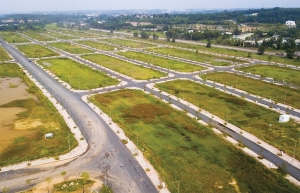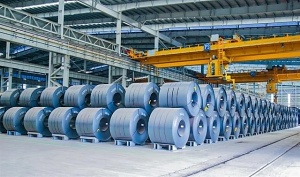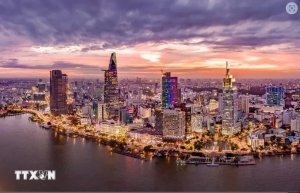The rise of industrial real estate M&A
The work on major infrastructure projects such as the North-South Expressway and Long Thanh International Airport will enhance connectivity and boost investor confidence. Meanwhile, updates to various laws and related decrees are streamlining legal procedures.
 |
| Trang Bui, country head Cushman & Wakefield Vietnam |
As of November, foreign direct investment into Vietnam stood at $27.26 billion, a on-year increase of nearly 1.9 per cent. The top sources of investment include Singapore, South Korea, China, and Hong Kong, reflecting Vietnam’s growing appeal as a manufacturing hub. Between 2020 and September this year, the total value of real estate merger and acquisition (M&A) transactions reached $2.94 billion, with industrial real estate leading the sector, accounting for 40 per cent of the total. Notably, in the first nine months of 2024, industrial real estate dominated with 91 per cent of the total transaction value of $178 million.
Prominent transactions have further underscored this trend. In May, Taiwan’s Tripod Technology Corporation leased 18 hectares of land in Chau Duc Industrial Park (IP), Ba Ria-Vung Tau, for $250 million to build a factory manufacturing electronic circuits and circuit boards. Similarly, Johnson Health Tech Corporation, also from Taiwan, registered a $100 million project in Bac Ninh’s Thuan Thanh 1 IP to produce fitness equipment.
The warehouse and logistics segment is also thriving. In March, Singapore’s Mapletree Logistics Trust acquired two Grade A warehouses in Binh Duong and Hung Yen for over $50 million, strategically positioning itself near Vietnam’s largest economic hubs. In July, Daiwa House Logistics Trust marked its entry into Vietnam by purchasing the D Project Tan Duc 2 in Long An province for $26.5 million.
Vietnam’s industrial real estate market is also diversifying beyond traditional manufacturing facilities. In May, VNG Corporation and ST Telemedia Global Data Centres partnered to develop international-standard data centres in Ho Chi Minh City, reflecting the increasing demand for digital infrastructure.
Sustainability is becoming a key consideration for investors, with renewable energy playing an essential role. In June, Sembcorp acquired a majority stake in three subsidiaries of Gelex Group, adding 196MW of wind and solar power capacity to its portfolio.
M&A activity offers numerous advantages for businesses and the broader industrial real estate market. It enables companies to access new capital, strengthen financial capacity, and expand investment opportunities. By acquiring high-quality assets, businesses can scale operations quickly, increase market share, and enhance their competitiveness.
Despite its many benefits, the industrial real estate M&A market faces challenges. Foreign investors continue to encounter legal complexities, administrative hurdles, and difficulties accessing prime assets. Most properties for sale are not widely advertised, complicating the process. Accurate valuation is another significant obstacle, as errors can lead to financial losses. Reputable international firms are often engaged to manage valuations, mitigating these risks.
Ensuring smooth post-M&A integration is equally challenging, requiring alignment in processes, systems, and corporate culture. Despite these obstacles, the potential rewards of M&A activity in Vietnam’s industrial real estate market continue to attract significant interest from investors.
Vietnam’s strategic location underpins its industrial real estate success. Approximately 40 per cent of goods transported from the Indian Ocean to the Pacific Ocean pass through the region, connecting major markets such as China, Japan, South Korea, and the United States.
Since the 1980s, Vietnam has transformed its industrial landscape. From just 335 hectares of industrial land in 1986, the country now boasts nearly 150,000 ha in 2024, solidifying its status as one of Southeast Asia’s leading manufacturing hubs.
The market has evolved significantly, moving beyond simple land leases for manufacturing plants to offering a diverse range of products, including ready-built factories and warehouses, mixed-use facilities, build-to-suit warehouses, and cold storage.
The industrial real estate market is further bolstered by robust performance metrics. As of the third quarter of 2024, existing industrial land supply exceeded 41,000 ha, with an occupancy rate of 77 per cent and average primary rental prices of $154 per square metre per lease term.
Ready-built factories now offer over 10 million sq.m of floor space, with an occupancy rate of 76 per cent and average rental prices of $4.8 per square metre per month. Meanwhile, ready-built warehouses supply 7.7 million sq.m of floor space, with a 77 per cent occupancy rate and average rental prices of $4.6 per square metre per month.
Cushman & Wakefield forecasts that Vietnam’s industrial real estate market will experience significant growth between now and 2027. The supply of industrial land in key economic regions is expected to increase by 10,600 ha, representing an annual growth rate of 7.5 per cent. Ready-built factories and warehouses are projected to expand by 1.9 million and 2.6 million sq.m, respectively, with annual growth rates of 5.9 per cent and 10.1 per cent.
 | Real estate businesses expand interest in available land to thrive in 2025 Real estate companies are vigorously seeking available land to prepare for a new wave of investment in 2025. |
 | US election result alters financial market outlook Vietnam’s financial fundamentals remain resilient enough to withstand any volatility arising from the US presidential election results, with suggestions that industrial real estate stocks could experience short-term gains. |
 | Investors betting on construction steel through 2025 Domestic construction steel is set to grow, driven by strong third-quarter (Q3) earnings, favourable Chinese policies, and government-led economic stimulus packages for highways and real estate. |
 | Vietnam’s real estate market among most promising in Asia-Pacific: Knight Frank Vietnam’s residential property market has captured the attention of High-Net-Worth Individuals (HNWIs) and investors, driven by strong GDP growth, urbanisation, and its strategic role in the “China+1” strategy, according to Knight Frank’s report. |
What the stars mean:
★ Poor ★ ★ Promising ★★★ Good ★★★★ Very good ★★★★★ Exceptional
Related Contents
Latest News
More News
- Vietnam bucking trend in the global M&A landscape (December 16, 2025 | 14:20)
- Sony Music Entertainment injects capital into Vietnam’s YeaH1 (December 16, 2025 | 09:00)
- Daikin expands Vietnam presence with Anh Nguyen deal (December 15, 2025 | 18:04)
- Astris Finance named among outstanding M&A advisory firms at Vietnam M&A Forum (December 12, 2025 | 12:00)
- UOA recognised for standout M&A deal in Ho Chi Minh City (December 12, 2025 | 11:32)
- Japanese investors pursue M&A strategies with long-term vision in Vietnam (December 11, 2025 | 12:14)
- FiinRatings wins M&A award as S&P deal strengthens Vietnam’s credit market (December 10, 2025 | 18:52)
- Unpacking new momentum in Vietnam’s M&A market (December 10, 2025 | 09:59)
- Landscape strong for domestic acquisitions (December 09, 2025 | 15:34)
- Vietnam’s M&A market opens new opportunities amid strong economic momentum (December 09, 2025 | 15:00)

 Tag:
Tag:





















 Mobile Version
Mobile Version